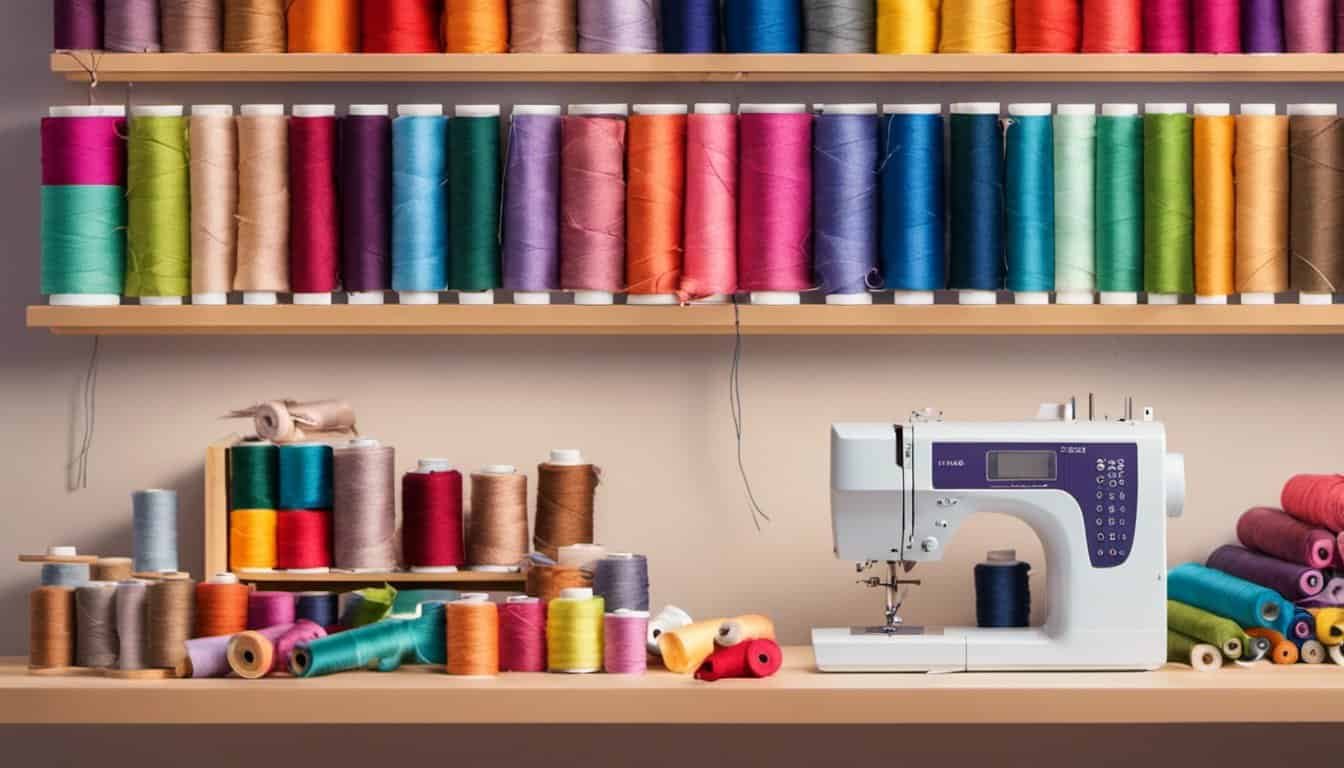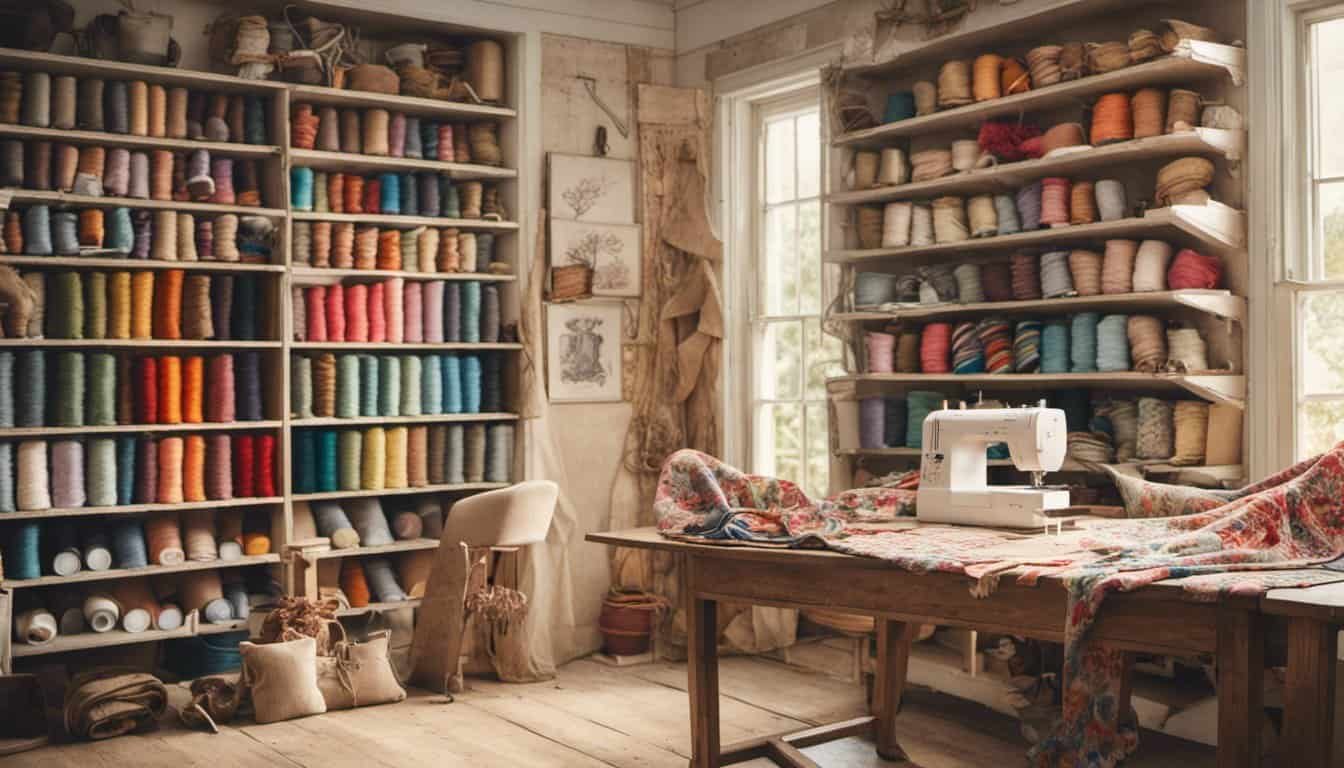If you’ve ever wanted to add a rich texture to your sewing projects, corduroy might just be the fabric for you. Its distinctive ribbed pattern offers both durability and style, making it a favorite among sewists and designers alike.
Whether you’re crafting cozy garments, stylish accessories, or home decor pieces, understanding how to work with corduroy can elevate your creations. In this guide, you’ll discover tips and techniques to make the most out of this versatile and textured fabric.
Understanding Corduroy Fabric
Corduroy features a distinct ribbed texture created by parallel ridges, known as wales, running along its length. The number of wales per inch determines the fabric’s fineness; typical counts range from 8 to 16 wales. Finer corduroy (higher wales count) offers a smoother appearance, while coarser corduroy provides a more pronounced texture.
Types of Corduroy
Corduroy varies based on wales count and fiber composition:
Wales Count:
- Wide-Wale: 8-10 wales per inch, ideal for durable garments.
- Mid-Wale: 11-14 wales per inch, suitable for versatile apparel.
- Fine-Wale: 15-16 wales per inch, perfect for lightweight projects.
Fiber Content:
- 100% Cotton: Soft, breathable, and natural.
- Cotton-Polyester Blends: Enhanced durability and wrinkle resistance.
- Synthetic Blends: Increased stretch and elasticity for specific uses.
Characteristics of Corduroy
Corduroy offers several key attributes that make it a popular choice in sewing projects:
- Durability: The woven structure withstands wear and tear, making it suitable for long-lasting items.
- Warmth: Its dense fibers provide excellent insulation, ideal for colder climates.
- Versatility: Available in various colors and weights, corduroy adapts to different styles and purposes.
- Maintenance: Generally easy to care for, requiring standard washing and ironing techniques.
Common Uses
Corduroy’s texture enhances numerous sewing projects:
- Apparel: Pants, jackets, skirts, and shirts benefit from its sturdy yet comfortable feel.
- Accessories: Hats, bags, and cushions gain a unique aesthetic with corduroy’s ribbed pattern.
- Home Decor: Upholstery, throw blankets, and curtains utilize corduroy’s warmth and texture effectively.
Understanding these aspects of corduroy fabric allows you to select the right type for your project, ensuring both functionality and style.
Choosing the Right Corduroy for Your Project
Selecting the appropriate corduroy enhances your project’s appearance and functionality. Consider the types and wale to match your specific sewing needs.
Types of Corduroy
Different corduroy types serve various project requirements:
- Wide-wale: Features 8-11 wales per inch, ideal for jackets and pants.
- Mid-wale: Contains 12-16 wales per inch, suitable for shirts and skirts.
- Fine-wale: Offers 17+ wales per inch, perfect for accessories like bags and cushions.
Selecting the Appropriate Wale
- Durability: Wide-wale corduroy withstands frequent wear, making it suitable for outerwear.
- Appearance: Fine-wale corduroy provides a sleek look, ideal for tailored garments.
- Comfort: Mid-wale balances texture and softness, fitting for everyday clothing items.
| Corduroy Type | Wale Count (per inch) | Best For |
|---|---|---|
| Wide-wale | 8-11 | Jackets, pants |
| Mid-wale | 12-16 | Shirts, skirts |
| Fine-wale | 17+ | Accessories, cushions |
Tools and Materials Needed
To start sewing with corduroy, gather the following tools and materials:
Materials
- Corduroy Fabric: Select the appropriate wale count (wide, mid, or fine) based on your project.
- Matching Thread: Choose a durable thread that complements your fabric color.
- Patterns: Use templates specific to corduroy to account for its thickness.
Tools
- Sewing Machine: Ensure it can handle heavy fabrics; a walking foot is recommended.
- Sharp Fabric Scissors: Keep them dedicated to cutting fabric to maintain sharpness.
- Pins and Needles: Use heavy-duty pins and needles designed for thick materials.
- Measuring Tape: Accurate measurements are crucial for a precise fit.
- Iron and Ironing Board: Press seams and hems to achieve a professional finish.
- Seam Ripper: Useful for correcting mistakes without damaging the fabric.
Optional Accessories
- Walking Foot: Prevents fabric layers from shifting during sewing.
- Bias Tape Maker: Creates bias tape to finish edges neatly.
- Thread Conditioner: Reduces tangling and ensures smooth sewing with corduroy.
Recommended Sewing Machine Settings
| Feature | Setting |
|---|---|
| Needle Type | Universal or heavy-duty |
| Stitch Type | Straight stitch for seams |
| Stitch Length | 2.5 to 3.0 mm |
| Presser Foot Pressure | Medium to high for thick fabrics |
Having these tools and materials ready will streamline your sewing process and help you achieve high-quality results with corduroy projects.
Sewing Techniques for Corduroy
Mastering sewing techniques specific to corduroy ensures your projects turn out professional and long-lasting. Follow these methods to handle the fabric with confidence.
Cutting and Preparing the Fabric
- Pre-Wash the Corduroy
Wash the fabric to prevent shrinkage and color bleeding. Use cold water and a gentle cycle.
- Stabilize the Fabric
Iron corduroy while it’s slightly damp. Press along the wales to maintain alignment and smoothness.

- Cut with Precision
Use sharp fabric scissors or a rotary cutter. Align the wales consistently to ensure the ribbed pattern remains uniform in your project.
- Mark Clearly
Use fabric chalk or washable markers to outline patterns. Avoid placing marks on the wales to prevent distortion.
- Prepare the Grain
Ensure that patterns are cut on the fabric’s grain. This enhances the garment’s fit and drape.
Handling Corduroy Seamstress
- Choose the Right Needle
Use a size 90/14 or 100/16 universal needle. A heavy-duty needle reduces skipped stitches and fabric damage.
- Select Appropriate Thread
Opt for polyester or cotton-polyester blend threads. They offer strength and flexibility suited for corduroy.
- Use a Walking Foot
« You Won’t Believe How Easy It Is to Sew Pet Toys for Animal Shelters
Sewing in Ancient Egypt: What We Know – 10 Amazing Secrets Revealed »
A walking foot prevents the fabric from shifting. It ensures even stitching through the thick wales.
- Adjust Sewing Machine Settings
Set a longer stitch length, around 3.0 mm. Increase presser foot pressure to accommodate the fabric’s thickness.
- Reinforce Seams
Double-stitch high-stress areas. This adds durability and maintains the garment’s structure.
- Trim Excess Threads
After sewing, trim threads close to the seams. This prevents bulkiness and ensures a clean finish.
- Press Seams Carefully
Use a pressing cloth to protect the fabric. Press seams flat, following the direction of the wales to maintain texture.

By implementing these techniques, you enhance the quality and longevity of your corduroy sewing projects.
Tips for Maintaining and Caring for Corduroy
Proper maintenance ensures your corduroy garments and items remain vibrant and durable. Follow these guidelines to keep your corduroy looking its best:
Washing Corduroy
- Read Care Labels: Always check the manufacturer’s instructions before washing.
- Use Cold Water: Wash corduroy in cold water to prevent shrinking and fading.
- Gentle Cycle: Select a gentle cycle to minimize wear on the fabric.
- Mild Detergent: Choose a mild detergent to preserve the fabric’s texture.
- Avoid Overloading: Wash corduroy items separately to allow ample space for movement.
Drying Corduroy
- Air Dry: Lay corduroy flat or hang it to dry naturally, reducing the risk of shrinkage.
- Low Heat: If using a dryer, select a low heat setting to protect the fibers.
- Remove Promptly: Take items out of the dryer immediately to prevent wrinkles.
Ironing Corduroy
- Iron Inside Out: Turn corduroy items inside out to protect the surface.
- Low Heat Setting: Use a low heat setting to avoid crushing the ribbed texture.
- Steam Option: Utilize the steam function to remove wrinkles effectively.
- Press Lightly: Apply minimal pressure to maintain the fabric’s structure.
Storing Corduroy
- Hang Carefully: Use padded hangers to prevent dents in the fabric.
- Fold Neatly: Fold corduroy items along the natural seams to avoid creases.
- Cool, Dry Place: Store in a cool, dry environment to prevent mildew and discoloration.
- Avoid Sunlight: Keep corduroy away from direct sunlight to maintain color integrity.
Preventing Pilling
- Use Fabric Softeners: Incorporate fabric softeners during washing to reduce friction.
- Turn Inside Out: Turn garments inside out before washing to minimize pilling on the surface.
- Gentle Handling: Handle corduroy items gently to prevent excessive wear.
- Remove Pills Carefully: Use a fabric shaver to remove pills without damaging the fabric.
Spot Cleaning
- Immediate Action: Address stains promptly to prevent set-in marks.
- Blot, Don’t Rub: Gently blot stains with a clean cloth to avoid spreading.
- Mild Cleaners: Use a mild detergent or stain remover suitable for corduroy.
- Test First: Test any cleaning solution on a hidden area to ensure it doesn’t discolor the fabric.
General Tips
- Rotate Wear: Alternate between corduroy items to reduce wear and extend their lifespan.
- Avoid Abrasives: Steer clear of abrasive surfaces that can damage the fabric.
- Professional Cleaning: For stubborn stains or delicate items, consider professional cleaning services.
| Maintenance Task | Recommended Action |
|---|---|
| Washing | Cold water, gentle cycle, mild detergent |
| Drying | Air dry or low heat, remove promptly |
| Ironing | Inside out, low heat, steam, press lightly |
| Storing | Padded hangers or neat folds, cool dry place |
| Preventing Pilling | Use fabric softeners, turn inside out, gentle handling |
| Spot Cleaning | Blot stains, use mild cleaners, test first |
Following these maintenance tips will help preserve the quality and appearance of your corduroy projects, ensuring they remain a stylish and durable addition to your wardrobe or home decor.
Conclusion
Crafting with corduroy opens a world of textured possibilities for your sewing projects. You’ll find that its durability and unique ribbed pattern add a special touch to any creation.
With the right tools and techniques at your disposal you can create stylish garments accessories and home decor items that stand the test of time. Embrace the versatility of corduroy and let your creativity shine in every stitch.


















